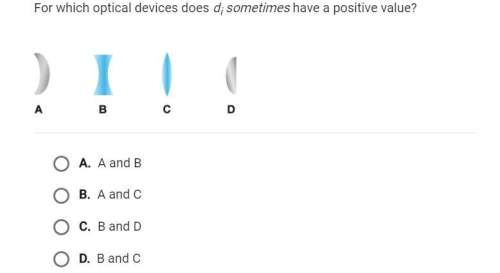
A 80 g, 38-cm-long rod hangs vertically on a frictionless, horizontal axle passing through its center. A 13 g ball of clay traveling horizontally at 2.4 m/s hits and sticks to the very bottom tip of the rod. To what maximum angle, measured from vertical, does the rod (with the attached ball of clay) rotate?

Answers: 1


Other questions on the subject: Physics

Physics, 22.06.2019 00:00, faithcalhoun
How do the measurements of charge at the different locations on the sphere compare to each other? the charge measurements are different at all locations on the sphere. the charge measurements are virtually not the same at all locations on the sphere except for the charge at the very top and at the very bottom that are equal. the charge measurements are virtually the same at all locations on the sphere except for the charge at the very top. at the top, the conductive sphere has a small disk that is made of different material. the charge measurements are the same at all locations on the sphere. what happens to the charge on the conductive sphere when it is connected to a source of charge such as the electrostatic voltage source? nothing will happen because no charge goes around the surface of the sphere. the charge on the conductive sphere spreads out over the surface of the sphere; being greater in some specific locations on the sphere. the charge on the conductive sphere spreads out uniformly over the surface of the sphere. the charge on the conductive sphere spreads out non-uniformly over the surface of the sphere.
Answers: 3

Physics, 22.06.2019 06:30, klorpo4055
In positive numbers less than 1, the zeros between the decimal point and a non-zero number are blank significant
Answers: 1

Physics, 22.06.2019 12:30, lanaasad7733
An ice-making machine inside a refrigerator operates in a carnot cycle. it takes heat from liquid water at 0.0 degrees celsius and rejects heat to a room at a temperature of 19.2 degrees celsius. suppose that liquid water with a mass of 76.3kg at 0.0 degrees celsius is converted to ice at the same temperature. take the heat of fusion for water to be l_f = 3.34*10^5 j/kg. how much energy e must be supplied to the device? express your answer in joules.
Answers: 1

Physics, 22.06.2019 13:30, kuddlebugsmommy
The two stars in a certain binary star system move in circular orbits. the first star, alpha, has an orbital speed of 36 km/s. the second star, beta, has an orbital speed of 12 km/s. the orbital period is 137 d. a) what is the mass of the star alpha? b) what is the mass of the star beta?
Answers: 1
You know the right answer?
A 80 g, 38-cm-long rod hangs vertically on a frictionless, horizontal axle passing through its cente...
Questions in other subjects:

Computers and Technology, 11.11.2019 11:31

Mathematics, 11.11.2019 11:31

Computers and Technology, 11.11.2019 11:31


History, 11.11.2019 11:31

Mathematics, 11.11.2019 11:31

Advanced Placement (AP), 11.11.2019 11:31



English, 11.11.2019 11:31




